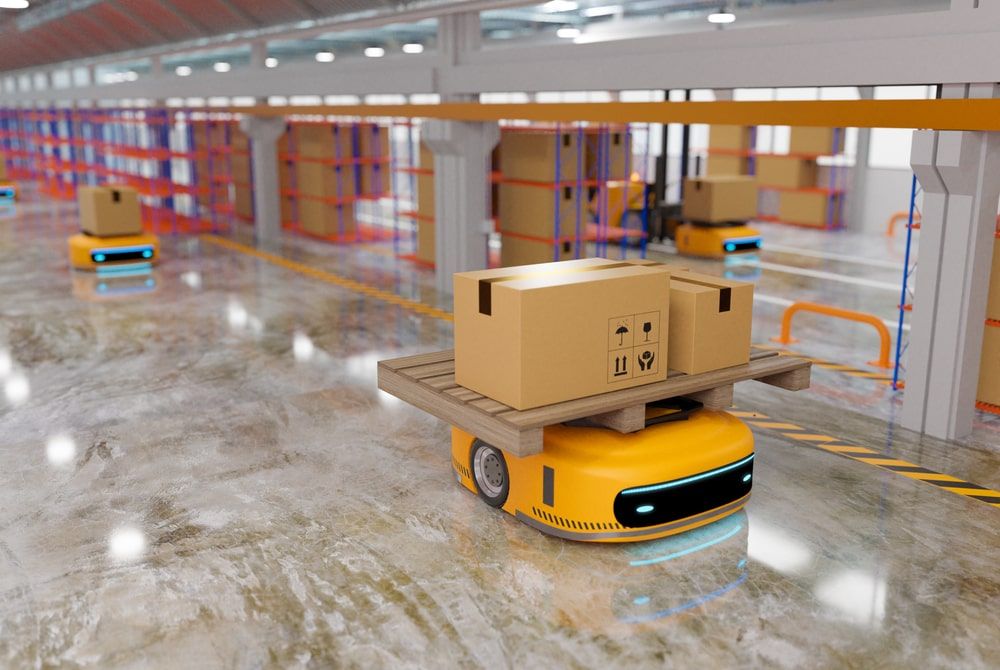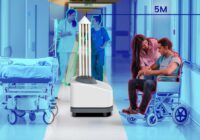Warehouse tasks demand an ever-increasing complexity and speed, like replenishing shelves, taking orders, processing and packing them, tallying inventory, and ensuring items are delivered promptly. Product traceability and identity are becoming increasingly crucial for many contemporary producers.
How Automated Warehouses Can Benefit From Omnidirectional 3D Vision Systems
Many intralogistics and warehouse automation procedures can benefit from the usage of machine vision. Omnidirectional 3D vision systems can partially automate warehouse procedures. They could determine robotic gripping locations. Deep learning and 3D technologies would result in a fully automated retrieval process. Moreover, they can autonomously check the contents of a box and the quality of the products within.
DreamVu patented optics and visual intelligence software to develop omnidirectional 3D vision systems that solve some of the most difficult vision difficulties. Their solution helps in the following manner:
Obstacle Detection
Only when an obstruction is the height of the plane can 2D LiDARs detect it. Smaller obstructions like trash cans, pallets, and variations in the floor plane frequently need to be found. These will go unnoticed by a 2D LiDAR but not by DreamVu’s 3D Obstacle Detection.
The 3D Obstacle Detection systems from DreamVu can detect barriers up to the required height for your robot and its cargo. Our warehouse robots provide effective navigation through busy and dynamic environments. With the DreamVu Object Recognition solution, an entire scene can be processed in each frame for a very computationally efficient result. They function under a variety of ambient lighting situations.
People Detection and Tracking
Even when people are in varied positions, our method provides high accuracy of individual detection with minimum false positives. In real-world circumstances, this allows robots to function in close proximity to people.
Including non-textured environments and things that can be misconstrued as humans in the deployment scenario drastically reduces the accuracy of person detection with standard stereo cameras. We use our cameras’ wide field of vision to provide considerably greater contextual awareness, resulting in fewer false positives.
How to Choose the Right Omnidirectional 3D Vision Systems
When purchasing omnidirectional 3D vision systems, selecting the proper camera for the job is critical.
PAL
With PAL, you may capture images with a 360° horizontal field of view and a 110° vertical field of view at a resolution of up to 9 megapixels, with a usable depth range of 10 meters and a minimum depth requirement. Every frame can provide a full 3D occupancy map, which makes PAL the perfect sensor for autonomous mobile robots (AMR) navigation systems. PAL gives ODOA and SLAM a thorough grasp of the surrounding area, enabling AMRs to localize and travel along the most effective routes.
PAL Mini
With a 360° horizontal field of view, an 80° vertical field of view, up to a 4-megapixel resolution, and a good depth range of 5 meters, PAL Mini is the most portable omnidirectional 3D vision system. The navigation systems of smaller AMRs and domestic robots are best suited for PAL Mini’s ultra-compact form factor. PAL Mini can also be used as an additional sensor for applications like person identification in disinfection robots or wall, cliff, and stair tracking in commercial cleaning robots.
Vision Intelligence Software
You can license DreamVu Vision Intelligence Software to shorten your time to market. Each module is designed to leverage the advantages of the omnidirectional 3D vision systems offered by DreamVu. Therefore, not only will your robots function better, but you’ll also be able to deploy them more quickly. You can use the following to aid in robot movement and navigation:
Visual simultaneous localization and mapping.
It is effective to use vision to construct a map and locate an AMR because useful information, such as object recognition, is also included in addition to the point-based map. This allows the AMR to distinguish between actual plant and movable obstacles. The DreamVu vSLAM system offers more complete and precise maps for better navigation.
Floor Mapping
An autonomous mobile robot needs a floor plan. It provides the navigation system with the positions of obstacles and supports wall tracking and stair edge detection. An AMR has a precise and rich floor map with the DreamVu Floor Mapping system for incredibly effective navigation. DreamVu 3D Mapping, in contrast to non-vision-based sensors, enables the creation of high-resolution and accurate 3D maps in color and with object recognition. This makes it possible for a more engaging experience and better data analysis.
Obstacle Detection & Obstacle Avoidance
It’s crucial to efficiently recognize and avoid obstacles while an AMR navigates a complex and changing environment. The DreamVu ODOA system can see and avoid hazards arriving from the sides or the back, in addition to those directly in front of the AMR.
Conclusion
It is certain that omnidirectional 3D vision systems, which can recognize player motions, will be used in the warehouse. So it is feasible to see a worker loading a truck supported by an extended conveyor.
DreamVu is leading the development of the next generation of visual intelligence and revolutionizing how machines and people see the environment with camera-based systems that use unique optics and imaging software to lower system costs and give an unmatched field of vision. However, we must recognize that the cost and performance of vision systems have grown and that many of these new technologies depend on vision systems.







